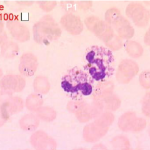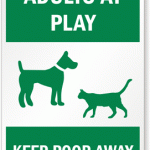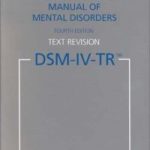Mental health articles
OF mental health care and mentally ill
Clinical Diagnosis Axis
Clinical Diagnosis: Some Possible Meanings
Before discussing some of the methodological problems and issues in clinical diagnosis, it is important to discuss briefly the possible meanings or interpretations attached to this term. Traditionally, clinical diagnosis has referred to discovering, describing, and designating a specific illness or disease. Deriving from the field of medicine, it has been closely identified with medical conceptions of disease entities. The Funk & Wagnalls New College Standard Dictionary gives the following as the first definition for the word diagnosis: ‘‘The art or act of discriminating between diseases and distinguishing them by their characteristics.’’
Websters Unabridged Dictionary defines diagnosis as ‘‘the act or process of deciding the nature of a diseased condition by examination.’’ Thus, diagnosis has been based on the disease entity concept used in medicine. Within this orientation, clinical diagnosis is of great importance, for appropriate treatment depends on the correct diagnosis. Medicine, based on scientific advances in such basic areas as biochemistry, genetics, microbiology, and comparable advances in instrumentation and equipment, has used the disease entity model with success. Many illnesses have been identified in terms of symptomatology, course of illness, prognosis, and possible causes. Treatments for a number of these illnesses subsequently have been discovered or developed. Consequently, the correct clinical diagnosis may lead to the selection and administration of an appropriate and effective treatment. Psychiatry, the branch of medicine concerned with psychopathology, has modeled itself after the practices of the parent field. Various neurologists and psychiatrists during the latter part of the nineteenth century and thereafter identified specific mental illnesses which they discovered or described, for example, general paresis, Korsakoff’s syndrome, and Alzheimer’s disease. This process has been relatively more successful in organic or neurological disorders where both the symptomatology and the course of the disorder can be more successfully described and the etiology more clearly ascertained. This, however, has not kept psychiatrists from describing and designating forms of mental illness which do not always fit the disease entity model successfully. Since the time that catatonia and hebephrenia were identified as separate types of mental illness more than 100 years ago, numerous designations and classifications have been devised by psychiatrists, individually or in organized groups.
Some categories, particularly those with a known etiology or course, have withstood the test of time. Others, however, have appeared on the diagnostic stage for an interval of time, and have then disappeared or were replaced. Dementia praecox, conceived by Kraepelin to incorporate the separate diagnoses of catatonia, hebephrenia, and paranoia, has given way to schizophrenia. The latter, in turn, has undergone several modifications and transformations, and questions are still raised about its diagnostic classification. In the latest revision of the official diagnostic manual of the American Psychiatric Association, DSM-IV, thirteen new diagnoses were added, and eight were deleted. In addition to changes in nosologies and designations of disease over time, different classifications or diagnostic schemes were promulgated during the same period. Thus, diagnostic schemes and specific diagnostic terms in psychiatry reflect the views of individuals and also of committees or groups of individuals who participated in the diagnostic classification process. For such reasons, both individual and group values and interests may influence the diagnostic system formally adopted at a given time. This point is mentioned to emphasize that the creation and adoption of a diagnostic system is not a result of scientific research per se. In more recent times, even economic considerations deriving from third-party payments have played a possible role in retaining or adding selected diagnoses.
In any event, diagnoses or diagnostic labels have been used in psychiatry, in conformance with medical views concerning illness and disease, to designate various types of psychopathology or deviant behavior. Because the care and treatment of disturbed individuals was gradually entrusted to the medical profession, such individuals also tended to be viewed as mentally ill, and their deviant behaviors, thoughts, and moods were considered symptoms of mental illness. This has had a number of important theoretical, practical, and research implications. Although our primary concern in this chapter is with methodological issues and problems, it is worth commenting here on some of the broader implications of using clinical diagnosis in the mental health field. Clearly, accurate diagnosis of illness or disease is an important prerequisite for selecting the most efficacious treatment. In severe illness, incorrect diagnosis may have serious consequences, including death. As medical science has advanced and as greater knowledge of disease has been accumulated, more effective diagnostic and treatment procedures have also been developed. The net result has been improved medical service. Thus, the concept of disease has worked well in medicine. However, when applied to psychiatry and psychopathology, the results have not been quite as successful.
One obvious problem with psychiatric diagnostic systems is the difficulty in deciding what is mental illness and what is not. For example, in the DSM II diagnostic system of the American Psychiatric Association, homosexuality was at first included as a mental disorder and then later was excluded. In DSM III, many new diagnostic categories were added, including such new disorders as pathological gambling and developmental reading disorders. In fact, the number of officially diagnosable disorders has increased markedly over the years. For example, DSM-I, published in 1952, listed slightly more than 100 disorders (American Psychiatric Association). DSM-II, published in 1968, contained more than 180 distinct psychiatric disorders, DSM-III in 1980 included more than 260 disorders, and both DSM-IIIR and DSM IV have more; DSM-IV leads with 357 disorders. This large increase in the number of specific mental disorders reflects changes in characterizing, delineating, and approaching the formal listing of types of psychopathology and is not an epidemic of new and strange disorders.
At present, it is difficult to know if the increase in the currently available psychiatric diagnoses facilities the process of diagnosis and subsequent treatment or if the diagnostic task has become more complicated and overly cumbersome. The slim diagnostic manuals of DSM I and DSM II have been replaced by the heavier tomes of DSM III, DSM III-R, and DSM IV. DSM-I consisted of 130 small pages, and DSM-II had 134 similar pages. However, the three most recent diagnostic manuals have increased noticeably; DSM-IV is far and away the largest with 886 pages. In a rather humorous publication, Blashfield and Fuller used regression estimates based on data from past editions of the DSM to make predictions about DSM V. On the basis of their analysis, DSM V will have 390 disorders and the estimated number of pages is 1026. It is still not clear if bigger is better. Guze in reviewing DSM-IV was both ‘‘impressed by and worried about the phenomenal growth in the number of diagnoses now recommended … (because) few of the hundreds of diagnoses have been satisfactorily validated’’.
In any event, it is apparent that there are difficulties in deciding what are diagnosable mental disorders and that such decisions have important social consequences. There is still some stigma associated with being mentally ill, but sometimes there also are more positive effects—for example, individuals may be provided treatment and avoid punishment. In a previous publication, for example, I raised some question about the appropriateness of listing ‘‘pathological gambling’’ as a mental disorder in DSM-III and mentioned that it had been used by a defense counsel on behalf of a defendant in a federal court trial (Garfield, 1986). However, in this case, the jury did not consider this defense acceptable and found the defendant guilty of kidnapping and auto theft. This may have been noted by those involved in preparing DSM-III-R because the following cautionary statement is contained in the introduction to DSM-III-R: It is to be understood that inclusion here, for clinical and research purposes, of a diagnostic category such as Pathological Gambling or Pedophilia does not imply that the condition meets legal or other nonmedical criteria for what constitutes mental disease, mental disorder, or mental disability.. This statement is also included in the introduction to DSM-IV. Apart from such issues, there is the fact that the diagnostic categories or disorders included in conventional diagnostic systems are not really comparable. On the one hand, as already mentioned, there are neurological or organic brain disorders that more clearly resemble what is usually termed illness in other fields of medicine. However, at the same time, there are a variety of other designated disorders that are quite different. Schizophrenia, for example, has been considered a major form of mental illness for many years. However, whether it is one disease or many or whether it is caused primarily by genetic, biological, or psychosocial factors, or by all three, is still not known. One critical review even states that schizophrenia is not a valid object of scientific inquiry and casts doubt on the reliability, construct validity, predictive validity, and ‘‘aetiological specificity of the schizophrenia diagnosis’’. The less severe forms of psychological disturbance are even more difficult to equate with medical conceptions of illness. For example, phobias, compulsions, anxieties, and similar problems are less like illnesses and more like variations from normative behaviors. In such behaviors or disorders, the distinction between discrete disorders or illnesses and behavioral patterns that can be viewed as more extreme variations on a continuum of normal behaviors be comes rather blurred. The DSMs, however, are based on a categorical system rather than on a continuous or dimensional one.
Therefore, there are different bases for the definition and classification of the different diagnostic categories. Some are based on known etiologies, some are organically caused, and some can be diagnosed systematically and reliably. Others are somewhat diffuse diagnoses in which the cause, course, and symptom pattern of the illness is cloaked in ambiguity. This is another way of saying that some may resemble traditional types of disease entities, but that others do not. Although clinical diagnosis has traditionally referred to medical conceptions of disease, the apparent difficulties in applying such conceptions to many of the problems of psychopathology encountered in clinical work has led to dissatisfaction with such diagnostic systems, particularly by psychologists.
Some of these difficulties will be discussed later. Other attempts to appraise psychological disorders, however, can be mentioned briefly at this point. Individuals with psychodynamic or interpersonal orientations have been more concerned with ideographic means of personality appraisal or diagnosis. Traditional psychiatric categories of diagnosis were viewed as too broad and of relatively little help in understanding the individual’s problems and in planning a program of treatment. The focus was on appraising the personality dynamics of the individual client with an emphasis on unconscious conflicts and defenses rather than on the diagnostic label that might be attached to the client. However, relatively less emphasis recently on psychoanalytic theory and increased emphasis on biological factors in psychiatry may also have played a role in the recent changes. Various other schemes have been developed, but they have not received wide clinical usage. For example, attempts to apply factor analysis to the results of psychological tests and rating scales have been made to identify more refined and reliable categories of psychopathology. The Inpatient Multidimensional Psychiatric Scale (Lorr, Klett, McNair, & Lasky, 1966) is one illustration of such an approach. Twelve specific syndromes were identified by factor analysis that reflected specific patterns of disturbance such as Excitement, Paranoid Projection, Perceptual Distortion, and Motor Disturbance. Although this scale was used in the past in research on chemotherapy, it has not been used much for regular clinical diagnosis. Nevertheless, such measures allow for dimensional studies of psychopathology that could provide more information than a categorical system like that used in psychiatric diagnosis. Similarly, related statistical approaches such as cluster analysis have also been used to classify or designate types of psychopathology. However, much of this research has been criticized as mainly descriptive in approach. ‘‘Too often, a clustering algorithm has been applied to a convenient data set as an end in itself. Few attempts have been made to determine whether the derived types have prognostic value with respect to treatment outcome or to integrate the types with previous research’’ (Skinner, 1986). Lorr (1986) also reports in a review that cluster analytic studies do not consistently offer support for the existing psychiatric diagnostic categories. Reference can also be made to the activities of clinical psychologists in diagnosis. Because of the primacy of psychiatry in diagnosing and treating psychopathology and disordered behavior, clinical psychologists who worked in medical installations, tended to follow the conventional diagnostic nosology. Most clinical staff conferences tended to center around discussions of the ‘‘correct’’ diagnosis. In some settings, the clinical director made the official diagnosis (diagnosis by authority). In other settings, the final diagnosis was reached by majority vote (diagnosis by democratic methods). I have no research data to report on which procedure was more efficacious. However, with the expansion of the field in the post-World War II era and with the creation of nonmedically dominated clinical centers, dissatisfaction with psychiatric diagnosis on the part of a number of psychologists was apparent. Many psychologists preferred to use the term, assessment, rather than diagnosis, and to focus on the problems, strengths, and deficiencies of the client or patient, rather than on bestowing a diagnostic label. This is a broader concept than the more traditional psychiatric diagnostic concept and is not tied to a disease model. Thus, the terms diagnostic appraisal or assessment tended to be favored over the term, diagnosis. In a survey reported a few years after the publication of DSM-III, only a small number of psychologists reported a preference for using DSM-III over other methods of diagnosis.
However, in recent years, with third party payments usually tied to formal psychiatric diagnoses, there has been much less criticism from practicing clinical psychologists. There has also been a noticeable increase in the forms of psychotherapy developed for specific psychiatric diagnostic groups, and psychologists have played a leading role in this development.
Thus, as noted, the term, diagnosis, may be used in somewhat different ways and with somewhat different meanings even though it has been traditionally associated with medicine and conceptions of disease. In the past, psychologists have favored a broader conception of assessment in which both the strengths and weaknesses of the individual evaluated were emphasized and less emphasis was placed on psychiatric diagnosis. However, relative improvements in recent diagnostic manuals and the importance of diagnosis for third-party payers has changed the situation for at least a number of clinical psychologists.
From Mental health articles, post Clinical Diagnosis Axis
Post Footer automatically generated by wp-posturl plugin for wordpress.







Leave a Reply